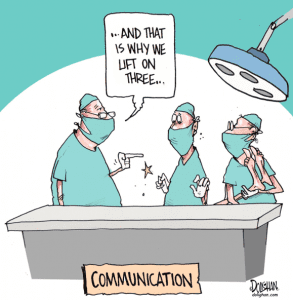 If you are a student of near-miss and casualty reports then you know, without a doubt, that flawed communications is a major contributing factor when things go wrong and flawed communications is often a factor when the quality of situational awareness erodes.
If you are a student of near-miss and casualty reports then you know, without a doubt, that flawed communications is a major contributing factor when things go wrong and flawed communications is often a factor when the quality of situational awareness erodes.
In fact, flawed communications was the second most frequently cited barrier to flawed situational awareness in my research, second only to staffing issues.
But how does communications get so messed up at emergency scenes? Let’s explore some of the barriers to effective communications.
Defining a situational awareness barrier
 For the purposes of my research, a barrier to situational awareness was anything that prevented the development of situational awareness, caused the erosion of situational awareness, or prevented the recovery of situational awareness once it was degraded. As you can imagine, that can be a pretty long list. In fact it is a long list. My research uncovered 116 barriers and I’m confident there are even more yet be uncovered and researched. One of the categories of barriers to situational awareness is flawed communications. Here are 19 ways communications can get flawed.
For the purposes of my research, a barrier to situational awareness was anything that prevented the development of situational awareness, caused the erosion of situational awareness, or prevented the recovery of situational awareness once it was degraded. As you can imagine, that can be a pretty long list. In fact it is a long list. My research uncovered 116 barriers and I’m confident there are even more yet be uncovered and researched. One of the categories of barriers to situational awareness is flawed communications. Here are 19 ways communications can get flawed.
#1: Bias is defined as displaying a prejudice for or against someone or something. Biases, as a category unto itself, are a significant barrier to situational awareness and extend far beyond communications challenges. In the context of communications, a receiver of a message can show bias for, or against, the messenger and this give greater or lesser deference to the message.
__________
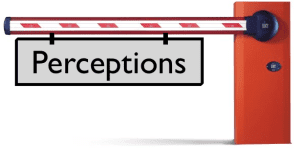 #2: Perception is defined as the ability to see, hear or become aware of something through the senses. However, perceptions are not always accurate. When information is shared in the form of communications between two or more people, the perception of the meaning may not be accurate. Is perception reality? This is a question we discuss during the Fifty Ways to Kill a First Responder program. Many think perception is not reality, but it is. At least it is to the person with the perception. And they’ll have no way of knowing their perception isn’t reality until reality rears it’s ugly head.When a responder communicates his or her observations, they should say “I think this is what might be going on, but I’m not really sure I’m seeing this right.” Of course, responders don’t say this. If they did, no one would trust anything they say. So, we say things with confidence and people believe us.
#2: Perception is defined as the ability to see, hear or become aware of something through the senses. However, perceptions are not always accurate. When information is shared in the form of communications between two or more people, the perception of the meaning may not be accurate. Is perception reality? This is a question we discuss during the Fifty Ways to Kill a First Responder program. Many think perception is not reality, but it is. At least it is to the person with the perception. And they’ll have no way of knowing their perception isn’t reality until reality rears it’s ugly head.When a responder communicates his or her observations, they should say “I think this is what might be going on, but I’m not really sure I’m seeing this right.” Of course, responders don’t say this. If they did, no one would trust anything they say. So, we say things with confidence and people believe us.
__________
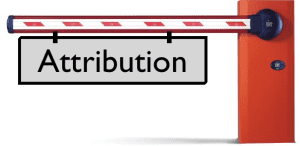
#3: Attribution is defined as the explanation people infer for the things they see or hear. Attribution can impact communications when the message of the sender is not the meaning attributed by the receiver. The problem is neither may know it until there is a consequence that brings it to light.
_________
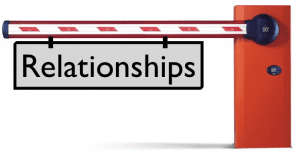 #4: Humans can give deference in favor of messages communicated by individuals the receiver has a good relationship with. Equally, messages communicated by individuals the receiver does not have a good relationship can be dismissed or discounted. Why? In a word, trust. We listen to and believe those we trust more than those we don’t.
#4: Humans can give deference in favor of messages communicated by individuals the receiver has a good relationship with. Equally, messages communicated by individuals the receiver does not have a good relationship can be dismissed or discounted. Why? In a word, trust. We listen to and believe those we trust more than those we don’t.
__________
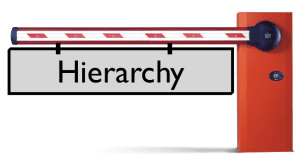 #5: The formal, structured flow, of communications can impact the quality of the message. The more layers of organizational hierarchy a message must travel, the greater the potential for flaws in communications. Think about the third-grade game of telephone. The more people the message has to flow through, the greater the likelihood the message is going to get distorted.
#5: The formal, structured flow, of communications can impact the quality of the message. The more layers of organizational hierarchy a message must travel, the greater the potential for flaws in communications. Think about the third-grade game of telephone. The more people the message has to flow through, the greater the likelihood the message is going to get distorted.
__________
#6: The greater the distance between the sender and receiver the greater the potential for miscommunications. This is especially true when the communications is over the phone or radio because the voice inflection can be misinterpreted and the sender and receiver do not have the benefit of interpreting the non-verbal communications.
__________
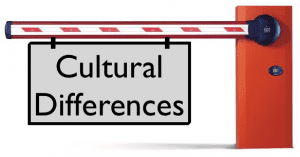 #7: As much as we are all one in the fire service we are all equally unique. These differences can cause miscommunications because terms and phrases that are commonly understood in one culture may be completely foreign in another. And in the context of this discussion, culture does not refer to ethnicity (although that can be a challenge as well).I am referring to the varying cultures within an existing fire department and from department to department within the same geographical region.
#7: As much as we are all one in the fire service we are all equally unique. These differences can cause miscommunications because terms and phrases that are commonly understood in one culture may be completely foreign in another. And in the context of this discussion, culture does not refer to ethnicity (although that can be a challenge as well).I am referring to the varying cultures within an existing fire department and from department to department within the same geographical region.
__________
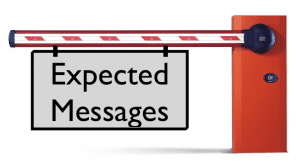 #8: When the message is an expected message, the receiver can tune out the message and the messenger. Parents witness this all the time when having a conversation with their children about doing homework, or cleaning up their bedrooms, or… (tuning out now). When a responder feels they understand enough about what is going on at the emergency scene, they may tune out the incoming communications.
#8: When the message is an expected message, the receiver can tune out the message and the messenger. Parents witness this all the time when having a conversation with their children about doing homework, or cleaning up their bedrooms, or… (tuning out now). When a responder feels they understand enough about what is going on at the emergency scene, they may tune out the incoming communications.
__________
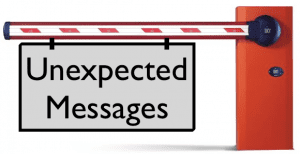 #9: When the message is so unexpected that it stuns the receiver, additional messages may not be heard or processed. This occurs because verbal messages are processed first in the auditory processor of the brain and then sent over to the visual processor to have a “sketch” of the image drawn in the mind’s eye. If the message is so unexpected that it stuns the receiver, the brain can get bogged down trying to make sense of what was just heard. This can prevent new messages from being processed.
#9: When the message is so unexpected that it stuns the receiver, additional messages may not be heard or processed. This occurs because verbal messages are processed first in the auditory processor of the brain and then sent over to the visual processor to have a “sketch” of the image drawn in the mind’s eye. If the message is so unexpected that it stuns the receiver, the brain can get bogged down trying to make sense of what was just heard. This can prevent new messages from being processed.
__________
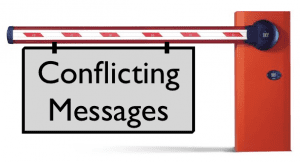 #10: When a receiver hears two messages that are in conflict with each other a decision must be made. Which message to believe? Alternatively the receiver can go on a search mission for more information that resolves the conflict.Unfortunately, in the high-stress, time compressed environment of emergency scenes, the receiver may simply jump to a conclusion about which piece of information is accurate. This guess – and it is a guess – may be right or it may be wrong. The lesson is usually apparent based on the outcome. Sometimes the guess can be wrong and luck prevails and the outcome is still ok.
#10: When a receiver hears two messages that are in conflict with each other a decision must be made. Which message to believe? Alternatively the receiver can go on a search mission for more information that resolves the conflict.Unfortunately, in the high-stress, time compressed environment of emergency scenes, the receiver may simply jump to a conclusion about which piece of information is accurate. This guess – and it is a guess – may be right or it may be wrong. The lesson is usually apparent based on the outcome. Sometimes the guess can be wrong and luck prevails and the outcome is still ok.
__________
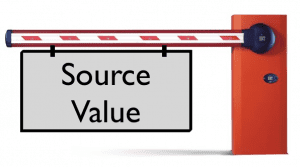 #11: Like it or not, we can find ourselves believing, or not believing, a message based solely on how well we know the sender of the message and how much we value their knowledge. We subconsciously evaluate the trustworthiness of the messenger. Does this person have enough credibility to be trusted? How well do I know this person? Do I like this person? Do I respect this person? We judge the messenger, and thus, the believability of the message.
#11: Like it or not, we can find ourselves believing, or not believing, a message based solely on how well we know the sender of the message and how much we value their knowledge. We subconsciously evaluate the trustworthiness of the messenger. Does this person have enough credibility to be trusted? How well do I know this person? Do I like this person? Do I respect this person? We judge the messenger, and thus, the believability of the message.
__________
#12: This is probably one of the most commonly discussed communications barriers because its the among the easiest to understand. Our language is complex and difficult to understand in the best of conditions. Simile, metaphor, hyperbole, on and on and on. The complexity of the spoken word leads to miscommunications.
__________
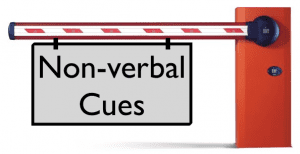 #13: In addition to the spoken word, the non-verbal clues and cues send powerful messages. When we are not in physical proximity to see the sender (or the receiver) we are missing an important component of the communications. In addition to the spoken word, receivers evaluate the inflection in the voice of the sender which can also significantly alter the intended message. “Are you going to paint that car red?” That simple 8 word question can have many meanings depending on the inflection. Look what happens when we inflect (emphasize) one word (noted in the capitalization of the emphasized word:
#13: In addition to the spoken word, the non-verbal clues and cues send powerful messages. When we are not in physical proximity to see the sender (or the receiver) we are missing an important component of the communications. In addition to the spoken word, receivers evaluate the inflection in the voice of the sender which can also significantly alter the intended message. “Are you going to paint that car red?” That simple 8 word question can have many meanings depending on the inflection. Look what happens when we inflect (emphasize) one word (noted in the capitalization of the emphasized word:
- ARE you going to paint that car red?
- Are YOU going to paint that car red?
- Are you GOING to paint that car red?
- Are you going to PAINT that car red?
- Are you going to paint THAT car red?
- Are you going to paint that CAR red?
- Are you going to paint that car RED?
#14: When you hear a message it is darn near impossible not to feel some emotion about the message (or the messenger). The emotions, in turn, trigger recalls of past experiences that bleed into current knowledge. Certain components of messages may contain more emotional triggers than other parts of the message.When something triggers an emotional recall of a past experience, you may, if only momentarily, zone out from the current moment as you’re flooded with the recall of a past experience. This may cause you to miss some component of the current message.
__________
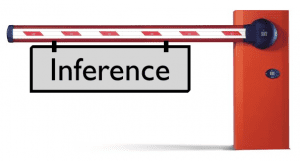 #15: We have lots of practice making inferences to messages we receive. In fact, we infer meaning on just about every message we receive. The more we know about the sender of the message and the better we understand the situation of the sender, the more accurate our inferences may be.To ensure the accuracy of an inference would require a series of questions and responses between the sender and receiver to ensure the message is completely and accurately understood. Rarely are neither time nor patience in enough supply during an emergency to accommodate this.
#15: We have lots of practice making inferences to messages we receive. In fact, we infer meaning on just about every message we receive. The more we know about the sender of the message and the better we understand the situation of the sender, the more accurate our inferences may be.To ensure the accuracy of an inference would require a series of questions and responses between the sender and receiver to ensure the message is completely and accurately understood. Rarely are neither time nor patience in enough supply during an emergency to accommodate this.
__________
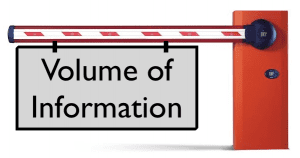 #16: The mere volume of information being shared can cause the receiver to suffer from information overload. When this happens, the receiver will start filtering out information. Unfortunately, the brain is not very good about sorting information on the fly and distinguishing the most important information from the less important information.Rather, the brain is more likely to remember the first pieces of information, the last pieces of information and the information that triggers emotional responses. Unfortunately, none of this may be the important information.
#16: The mere volume of information being shared can cause the receiver to suffer from information overload. When this happens, the receiver will start filtering out information. Unfortunately, the brain is not very good about sorting information on the fly and distinguishing the most important information from the less important information.Rather, the brain is more likely to remember the first pieces of information, the last pieces of information and the information that triggers emotional responses. Unfortunately, none of this may be the important information.
__________
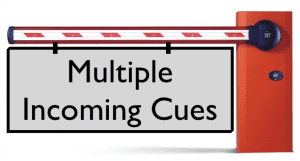 #17: The act of listening requires conscious awareness and a need to pay attention to the message. We cannot multitask the act of listening. What we do instead of multitasking is we interleave. Interleaving is single tasking in multiple succession. In other words, we listen to one thing, then the other, then back to the first (assuming there are only two communications inputs to listen to).This requires a lot of heavy lifting by the brain, especially in a dynamically changing environment where there are also complex things to SEE.
#17: The act of listening requires conscious awareness and a need to pay attention to the message. We cannot multitask the act of listening. What we do instead of multitasking is we interleave. Interleaving is single tasking in multiple succession. In other words, we listen to one thing, then the other, then back to the first (assuming there are only two communications inputs to listen to).This requires a lot of heavy lifting by the brain, especially in a dynamically changing environment where there are also complex things to SEE.
__________
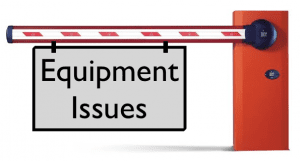 #18: There are numerous challenges we can face at an emergency scene when it comes to our communications equipment: Broken radios, incompatible equipment, operating on different frequencies, being on the wrong channel/talkgroup, not being able to reach the repeater, lapel mic not working, muffled modulation through the face piece, feedback from multiple radios too close in proximity to each other, and many others. Our technology isn’t perfect and the flaws impact the effectiveness of communications.
#18: There are numerous challenges we can face at an emergency scene when it comes to our communications equipment: Broken radios, incompatible equipment, operating on different frequencies, being on the wrong channel/talkgroup, not being able to reach the repeater, lapel mic not working, muffled modulation through the face piece, feedback from multiple radios too close in proximity to each other, and many others. Our technology isn’t perfect and the flaws impact the effectiveness of communications.
__________
#19; It’s no mistake I saved this one for last. Stress is a game changer when it comes to our performance. In some ways stress improves performance. In other ways stress devastates performance. Such is the case for communications. Stress can causes our senses to go on high alert for danger, increasing your audible acuity. This means you may be able to hear things that you would not normally hear if you were not under stress. This increase in audible acuity may be enough to help you hear the scream of a child trapped in a burning home. On the downside, stress can lead to auditory exclusion. This means that stress can make you deaf. You may simply not hear things, even when those messages are coming through a radio that is just a few inches from your ear.
Share your thoughts and ideas in the “Leave a Reply” box below.
_____________________________________________________________
The mission of Situational Awareness Matters is simple: Help first responders see the bad things coming… in time to change the outcome.
Safety begins with SA!
_____________________________________________________________
Share your comments on this article in the “Leave a Reply” box below. If you want to send me incident pictures, videos or have an idea you’d like me to research and write about, contact me. I really enjoy getting feedback and supportive messages from fellow first responders. It gives me the energy to work harder for you.
Thanks,

Email: Support@RichGasaway.com
Phone: 612-548-4424
Facebook Fan Page: www.facebook.com/SAMatters
Twitter: @SAMatters
LinkedIn: Rich Gasaway
YouTube: SAMattersTV
iTunes: SAMatters Radio

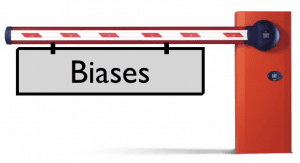
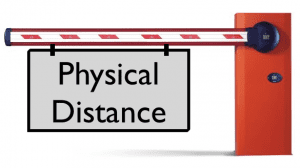
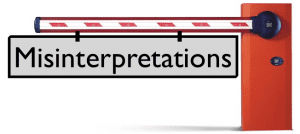
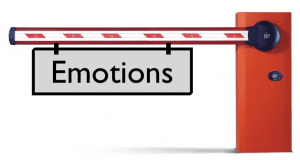
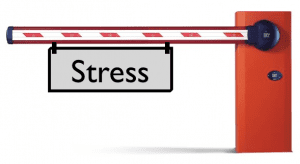
Hi, just let me first say I am researching complacency for some updated training for the Okalhoma Dept. of Corrections and I have found your information some of the best, Thank you! I was also wondering if I might use some of your material in this training development? Your information is spot on for the type of environment corrections staff work in. Thank you so much for your consideration in this matter.
Valeri Hale, Correctional Training Specialist
3300 Martin Luther King Blvd.
Oklahoma City, Oklahoma 73111